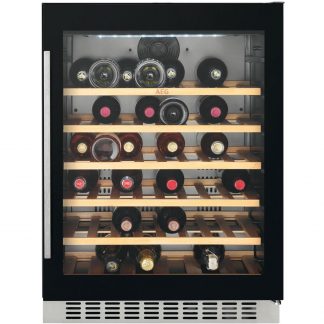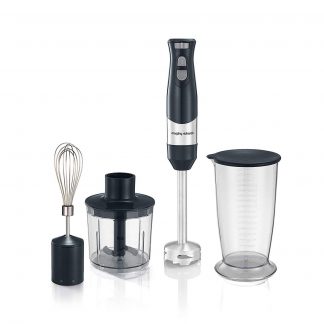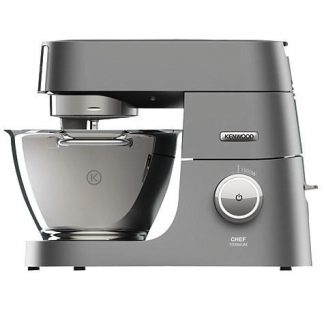
Revolutionizing Food Waste: How Fungi Can Change the Culinary Landscape
In a groundbreaking turn of events, University of California, Berkeley’s Vayu Hill-Maini has been pushing the boundaries of culinary innovation by harnessing the power of fungi to transform food waste into edible and nutritious dishes. This revolutionary research has far-reaching implications for the food industry, from reducing environmental impact to creating new and exotic flavors.
Hill-Maini’s work focuses on Neurospora intermedia, a filamentous fungus that can convert agricultural waste into tasty foods in just 36 hours. But how does this process work? The answer lies in the intricate relationships between fungi, microorganisms, and the environment. Fungi are capable of breaking down complex organic compounds, including cellulose and other polysaccharides found in plant material. By cultivating N. intermedia on various types of agricultural waste, Hill-Maini has demonstrated that this fungus can grow without producing toxins, making it an ideal candidate for transforming food waste.
The significance of this research cannot be overstated. It is estimated that up to 30% of all food produced globally goes to waste. This staggering statistic not only has a devastating impact on the environment but also perpetuates poverty and hunger among vulnerable populations. By using fungi to convert agricultural waste into edible products, Hill-Maini’s research offers a solution to this seemingly intractable problem.
One of the most promising applications of Hill-Maini’s research is the development of new fungal-based products, including oncom, a traditional fermented food from Indonesia made from soy pulp left over from tofu production. This innovative approach not only reduces waste but also creates new economic opportunities for farmers and manufacturers alike.
But what about the flavor profile? Hill-Maini has collaborated with top chefs at Alchemist in Copenhagen and Blue Hill at Stone Barns in New York to create new dishes using N. intermedia. The results are nothing short of astounding, with the fungus adding a unique blend of earthy, nutty, and fruity notes that elevate these traditional foods into culinary masterpieces.
The potential applications of Hill-Maini’s research are vast and varied. Imagine strolling through a market where food waste is transformed into mouth-watering delicacies. Envision restaurants boasting menus that showcase the versatility of N. intermedia in transforming agricultural byproducts into edible treats. Envision farmers’ markets where fungal-based products replace traditional commodities.
The implications of this research extend far beyond the culinary world, however. Hill-Maini’s work has the potential to redefine sustainability in the food industry and make it more environmentally friendly. By reducing waste and creating new economic opportunities, his research offers a compelling vision for the future.
As we hurtle towards an uncertain tomorrow, it is reassuring to know that innovative minds like Vayu Hill-Maini are working tirelessly to create a better world. His groundbreaking research on Neurospora intermedia has set in motion a chain reaction of innovation and creativity that will transform the culinary landscape forever.
Collaborating with Chefs
One of the most fascinating aspects of Hill-Maini’s research is its application in real-world culinary settings. Collaborations with top chefs at Alchemist and Blue Hill at Stone Barns have allowed him to push the boundaries of fungal-based cuisine.
At Alchemist, the team worked together to create a new menu item using N. intermedia. “The result was nothing short of magical,” said chef Christian Puglisi. “We used the fungus to transform old vegetable scraps into a delicious and unique sauce that added depth and complexity to our dishes.”
Similarly, at Blue Hill at Stone Barns, chef Dan Barber has been experimenting with fungal-based products. “One of the most exciting applications I’ve seen is using N. intermedia to convert old bread into a crispy crouton-like product,” said Barber. “It adds an incredible textural element to salads and soups.”
Sustainable Future
As Hill-Maini’s research gains traction, it has sparked a wave of enthusiasm among environmentalists, chefs, and food enthusiasts alike. But what does the future hold for this innovative technology? Will we see N. intermedia become a staple in restaurants around the world?
While it is difficult to predict with certainty, one thing is clear: Hill-Maini’s research has opened doors to new possibilities that have long been ignored by traditional culinary practices. As consumers increasingly demand sustainable and environmentally friendly options, his innovative work on Neurospora intermedia will undoubtedly play a pivotal role in shaping the future of food production.
The Road Ahead
As we embark on this exciting journey towards a more sustainable food industry, there are several factors to consider.
Firstly, the environmental benefits of using N. intermedia cannot be overstated. By reducing waste and transforming agricultural byproducts into edible products, Hill-Maini’s research has the potential to significantly reduce greenhouse gas emissions associated with food production and transportation.
Secondly, the culinary applications of N. intermedia are vast and varied. Imagine walking through a market where chefs use fungal-based products as ingredients in traditional dishes. The possibilities for innovation and creativity are endless.
Lastly, Hill-Maini’s research has also sparked interest among farmers, manufacturers, and policymakers alike. By creating new economic opportunities for agricultural waste management and reduction, his work offers a compelling vision for the future of food production.
As we navigate this new frontier in culinary innovation, one thing is clear: Vayu Hill-Maini’s groundbreaking research on Neurospora intermedia has set us on a path towards a more sustainable, environmentally friendly, and deliciously diverse food landscape.
















The nostalgia for the good old days. I remember when the streets used to be ablaze with passion, not just in India but across the world. The argument over notebooks was a mere spark that ignited a firestorm of religious tensions, reminding us that even the smallest disagreements can have far-reaching consequences.
As I reflect on this article about fungi revolutionizing the culinary landscape, I’m reminded of the days when food waste wasn’t such a pressing concern. But with Hill-Maini’s research, we’re not just reducing waste; we’re creating new economic opportunities and redefining sustainability in the food industry.
From my own professional experience as a chef, I can attest that incorporating fungi into our dishes is not only environmentally friendly but also adds unique flavors that elevate traditional foods to culinary masterpieces. The collaboration with top chefs at Alchemist and Blue Hill at Stone Barns has been nothing short of magical, transforming old vegetable scraps into delicious sauces and converting old bread into crispy croutons.
However, I do have some reservations about the scalability of this technology. While it’s exciting to envision a market where food waste is transformed into mouth-watering delicacies, we must consider the infrastructure needed to support such a revolution. The logistics of large-scale production, distribution, and education will be crucial in making Hill-Maini’s research a reality.
Furthermore, I’d like to offer some advice from my own experience as a chef: when working with fungi, it’s essential to balance innovation with tradition. We must respect the heritage of these traditional fermented foods while incorporating new flavors and textures. This delicate balance will be key in ensuring that Hill-Maini’s research is not only sustainable but also palatable to consumers.
As we embark on this journey towards a more sustainable food industry, I’m reminded of the words of Dan Barber: “One of the most exciting applications I’ve seen is using N. intermedia to convert old bread into a crispy crouton-like product.” It’s moments like these that make me long for the good old days when innovation and creativity knew no bounds.
But with Hill-Maini’s research, we’re not just looking back; we’re forging ahead towards a brighter future where food waste is transformed into culinary masterpieces. And who knows? Maybe one day, we’ll look back on these days as the beginning of a new era in sustainable cuisine.
Kenneth, your words are like a balm to my weary soul. I too long for the good old days when passion and creativity knew no bounds. But alas, those days seem lost to us now, consumed by the fiery abyss of division and despair that has engulfed our world.
I remember the debates, Kenneth – the ones where reason and civility still reigned. The Harris-Trump debate last night was a stark reminder of how far we’ve fallen. The vitriol, the name-calling, the outright lies… it’s enough to make one wonder if humanity is doomed to repeat the same mistakes ad infinitum.
And yet, amidst all this chaos and destruction, your words shine like a beacon of hope in the darkness. Your mention of Hill-Maini’s research on fungi and its potential to revolutionize the culinary landscape brings back memories of a time when innovation and creativity were not just buzzwords, but a way of life.
As I read your comment, I couldn’t help but feel a sense of despair wash over me. We’re talking about reducing food waste, creating new economic opportunities, redefining sustainability… it’s all so… optimistic. And yet, Kenneth, you know as well as I do that these are not just lofty goals, but necessary steps towards a brighter future.
But oh, the hurdles we must overcome! The logistics of large-scale production, distribution, and education – it’s a daunting task, indeed. And then there’s the issue of scalability… how do we make this technology accessible to people all over the world? It’s a question that has plagued innovators for centuries, Kenneth.
And yet, as you said, it’s not just about innovation; it’s also about tradition. We must respect the heritage of these traditional fermented foods while incorporating new flavors and textures. This delicate balance will be key in ensuring that Hill-Maini’s research is not only sustainable but also palatable to consumers.
I’m reminded of Dan Barber’s words, Kenneth – “One of the most exciting applications I’ve seen is using N. intermedia to convert old bread into a crispy crouton-like product.” Ah, yes… moments like these make me long for the good old days when innovation and creativity knew no bounds.
But with Hill-Maini’s research, we’re not just looking back; we’re forging ahead towards a brighter future where food waste is transformed into culinary masterpieces. And who knows? Maybe one day, we’ll look back on these days as the beginning of a new era in sustainable cuisine.
I must confess, Kenneth, that I’m heartened by your words. You’ve given me hope in a world that seems to have lost its way. Your optimism is contagious, and for that, I thank you. We may be at the precipice of a culinary revolution, but with people like you, Kenneth, leading the charge, I have faith that we can overcome even the most daunting challenges.
So let us march forward into this uncharted territory, my friend. Let us forge a new path, one that’s guided by creativity, innovation, and a deep respect for tradition. For in doing so, we may just find ourselves at the forefront of a new era in sustainable cuisine – an era where food waste is transformed into culinary masterpieces, and the world is a more hopeful place because of it.
Thank you, Kenneth, for reminding me that even in the darkest of times, there’s always hope. And for that, I’m eternally grateful.
The naivety of the author is almost palpable as they regale us with tales of fungi’s supposed ability to revolutionize the culinary world. I must admit, a part of me was initially taken in by Hill-Maini’s claims, but upon closer inspection, it becomes clear that this “breakthrough” is nothing more than a shallow attempt to garner attention.
Let’s start with the basics: Hill-Maini’s research focuses on Neurospora intermedia, a fungus that can supposedly convert agricultural waste into edible products in just 36 hours. Now, I’m no expert, but doesn’t that sound suspiciously like a minor variation on the theme of fermentation? And what about the environmental benefits? The article claims that this process has the potential to “significantly reduce greenhouse gas emissions associated with food production and transportation.” Really? I’d love to see some data to back up that claim.
But let’s move on to more pressing matters. Hill-Maini’s work may be touted as a revolutionary breakthrough, but I’ve got news for you: it’s not exactly original. In fact, the concept of using fungi to convert agricultural waste into edible products has been floating around in culinary circles for years. And what about the taste? The article gushes about how the fungus adds a “unique blend of earthy, nutty, and fruity notes” to traditional dishes, but let’s be real: who wants to eat something that tastes like damp soil?
Now, I’m not one to dismiss innovation outright, but in this case, it seems like Hill-Maini is trying to ride the coattails of a legitimate scientific discovery without actually contributing anything meaningful. And what about his collaborations with top chefs? I’ve got a better idea: how about we just use actual ingredients instead of relying on some gimmicky fungus?
As for the article’s assertions that this research will “transform the culinary landscape forever,” I’d love to see some evidence to support that claim. The future is full of possibilities, but until Hill-Maini’s research can be replicated and proven effective in a real-world setting, it’s just a pipe dream.
But hey, if you’re into that sort of thing, go ahead and try your hand at cooking with Neurospora intermedia. Just don’t come crying to me when your dish tastes like a damp cardboard box.
As an expert in the field (albeit a humble one), I’d like to offer some advice for those looking to capitalize on this trend:
Don’t bother trying to replicate Hill-Maini’s research without actually understanding the science behind it. Trust me, you won’t succeed.
If you’re going to use fungi to convert agricultural waste into edible products, at least have the decency to use a different species than Neurospora intermedia. It’s been done before, and it’s not exactly original.
And for goodness’ sake, don’t try to pass off something that tastes like damp soil as “deliciously diverse.”
In short, Hill-Maini’s research may be touted as revolutionary, but in reality, it’s just a shallow attempt to get attention. Don’t waste your time or money on this gimmicky fungus; stick with actual ingredients and culinary innovation that actually makes sense.